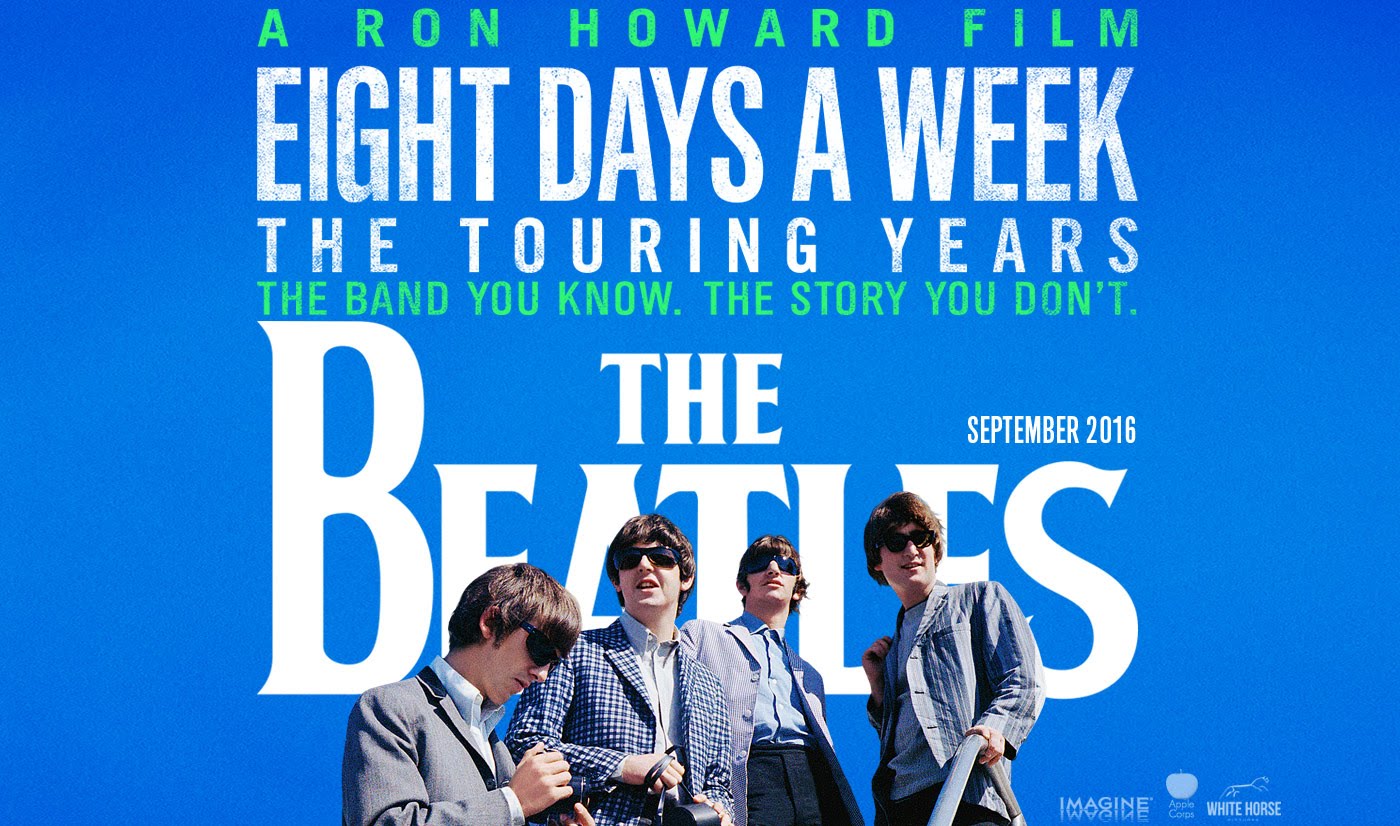This week I’m stepping into the TTRPG space (something I normally save for August, but slacked off on this year), to cover a documentary film about the life of Gary Gygax.
Tag Archives: Documentary

Documentary Review: The Dreams in Gary’s Basement
A couple years ago I reviewed Secrets of Blackmoor – a documentary about Dave Arneson, and the development of the Blackmoor campaign leading up to the development of the first edition of Dungeons & Dragons. Kickstarting around the same time was Dreams in Gary’s Basement, a documentary focusing on the life of Gary Gygax. I’ve covered a couple of biographies of Gygax’s life in the past – Empire of the Imagination and Rise of the Dungeon Master. When Dreams in Gary’s Basement went up for Kickstarter, I felt that this was an appropriate documentary to back as well. Well, now I’ve received my physical copy and I’ve watched it – so now it’s time for my thoughts.
Continue reading
Film Review: Beep – A Documentary History of Game Sound
What is particularly significant about Beep: A Documentary History of Game Sound can be found at the end of its title – Sound. Beep is a documentary not on just game music, though that certainly would merit a documentary on its own – but on sound in games as a whole, from the rudimentary tones of Pong to modern game sound effects, along with music and voice acting.
Continue reading
Documentary Review: Eye of the Beholder – The Art of Dungeons & Dragons
Our third documentary review for this month is a look at a documentary on the history of the art of Dungeons & Dragons, with a focus on the TSR years of the game.
Continue reading
Documentary Review: Secrets of Blackmoor Part 1
I’m continuing with the tabletop RPG documentaries with a look at the kickstarted documentary “Secrets of Blackmoor”, about the formation of the Blackmoor campaign and Dave Arneson’s early life.
Continue reading
Eye of the Beholder: Documentary Review
It’s time to review another of the RPG documentaries I’ve previously backed on Kickstarter, with Eye of the Beholder, covering the art of Dungeons & Dragons. For those who prefer video reviews of this, there will be a video review coming later this month.
Continue reading
Secrets of Blackmoor Part 1: Documentary Review
Time to cover a the first of a couple documentaries about the history of tabletop RPGs that I’ve previously backed on Kickstarter, starting with Secrets of Blackmoor – Part 1. There will be a video review forthcoming later this month if you prefer that.
Continue reading
Documentary (Video) Review: The Dwarvenaut
For the month of GenCon, it’s time to take a look at a documentary about Tabletop RPGs – or in this case dungeon terrain for Tabletop RPGs.
Continue reading
Tokyo Olympiad: Film Review
This is a review that is over a year overdue. I had fully intended to watch this movie leading up to the Tokyo Olympics and, I admit, I forgot. However, after over a year of waiting, it’s time to rip the band-aid off, and take a look at the (currently) only Olympic documentary to make it into the Criterion Collection – Tokyo Olympiad.
Continue reading
Memory: Origins of Alien: Film Review
I like documentaries about the making of movies a lot. Empire of Dreams was one of my favorite parts of the Star Wars DVD set, and its lack of inclusion on the Blu-Ray release was something of a bummer. Similarly, each of the making of documentaries on the Prequel movies were great, even if the movies themselves had issues, and I’ve always loved the documentaries on the various Alien series boxed sets. So, when I learned an independent documentary was being made on the origins of Alien, I had to pick it up.
Continue reading
Rush: Beyond The Lighted Stage – Film Review
In 2019 we lost Neil Peart, one of the greatest drummers of all time, and part of one of my favorite bands – Rush. So, when Rush: Beyond the Lighted Stage came up on my Netflix recommendations, I figured it was time to check it out.
Continue reading
Movie Review: George Harrison – Living in the Material World

Documentary Review: The Dwarvennaut
Fast forward to a few years ago when I finally got in a long-running game again, and much to my delight, my GM owned pretty much all of the Dwarven Forge terrain that had come out to date – so I was able to play with it and experience using it first hand – and it was great. And then I learned about a documentary on Netflix about the guy who started Dwarven Forge, and I decided I had to check that out. I didn’t know exactly what it’s tone would be. However, thus far Netflix had not steered me wrong on the documentary front, so what the hell?
The Dwarvenaut is a interesting documentary – as both an character study of Stefan Pokorny, the founder of the company and one of the sculptors of the terrain the company puts out, and a brief snapshot of what draws people to Roleplaying games. That said, the film is tends strongly more towards the former than the latter. Stefan talks about what drew him to RPGs and we get some interviews with people, often industry luminaries, about what drew them to RPGs – but while the documentary goes to GenCon and other locations we don’t get much of an opportunity to talk to newer roleplayers about why they play, and what draws them to the products that Dwarven Forge makes.
The framing “narrative” as much as there is one, is based around the launching of Dwarven Forge’s third kickstarter, for their City Terrain set, after their earlier “Dungeon” and “Cave” sets. In particular, there are some concerns that due to overpromising on the kickstarter, if they don’t raise $2 million, they will end up going bankrupt. The “will they or won’t they make the goal” part of the
The profile of Stefan is far more engrossing – getting into not only what motivates him as a person who is into roleplaying (specifically designing a product that would motivate people to play in person instead of online), but also as an artist. There’s an scene in the film where Stefan goes back to Venice, where he spent some time after he graduated from art school, and he talks about the wear on the stones and about the stories those buildings must have scene – and that speaks volumes of the artistic motivations behind the Dwarven Forge terrain.
The film also does an amazing job of presenting Dwarven Forge’s terrain, visually. We get some really well shot closeups of the terrain, with lighting and dry-ice fog that makes it look like a miniature from a fantasy movie (and that’s not a bad thing – this is a product that you can buy after all). It kinda makes for a really strong advertisement for Dwarven Forge’s products, which is not what I expected from this documentary.
It’s an engrossing film. I don’t know if it’s one that I’d necessarily add to my collection, but it was definitely worth watching. The film is currently available for streaming on Netflix, and also on Amazon on DVD and Digital.

Film Review: Viva Amiga!
I understand that this is a documentary that was funded on Kickstarter, and you can only make as much documentary as you have money for. However, it tries to serve two masters and serves neither well. There are really interesting portions of the documentary with great development stories. There’s the story of how the Amiga almost didn’t come out, and they took out a loan from Atari – then headed by Jack Tramiel, with the Amiga Hardware and OS as collateral – and they got bought-out by Commodore at the last minute, with the CEO of Commodore personally delivering the loan payment to Tramiel just to twist the knife a little bit more (perhaps explaining why The 8-Bit Generation chose to downplay the Amiga, considering the film’s view on Jack Tramiel).
Further, the documentary bounces all over on the user side of things. There’s a few seconds discussion of modern Amiga user groups, and a few seconds of discussion of how it was used in video production back in the ’90s (with 2 seconds of footage from Babylon 5), and a couple minutes of discussion of use of the Amiga in electronic music, giving the implication that there’s room for, if not a much larger documentary, then at least more time in this documentary on the modern Amiga user scene – especially considering that part of the point of the film is that there is a modern Amiga user scene, and that the platform is still a living, breathing viable platform.
It feels like there was enough material here a 90 to 120 minute documentary, but for various reasons, possibly in part due to the amount of Kickstarter funds brought in, there was only enough room for the hour that we got. It’s a bummer, and, honestly, I wouldn’t mind seeing a Viva Amiga 2.

Film Review: The 8-Bit Generation
The 8-Bit Generation focuses almost exclusively on Commodore computers, with a perspective from within the company, and in particular from the view of Jack Tramiel and his boosters within Commodore. From the view of this documentary, with Jack at the helm, Commodore can do no wrong, and their opponents could do no right. Apple never gained any real market share while Commodore dominated the market (Wrong – the Apple IIe was solid rival for Commodore), Atari had no 3rd party publishers and actively fought them for the PC (Wrong – their main opposition to 3rd party publishers was on the video game console front, they had plenty of 3rd party developers and publishers for PC), and once Jack was ousted from Commodore, they never accomplished anything ever again (Wrong – The Amiga says “Hi!”). Particularly damning is the claim that Atari didn’t get VisiCalc until a year after Commodore did, which is clearly false.
It’s really rather disappointing. While the documentary has interviews with Tramiel himself, I get the strong impression that the reason the director was able to get these interviews in the first place because they were already a booster of Tramiel. The majority of the interview footage comes from Commodore employees and Tramiel supporters, with the only exceptions from that being a brief interview with Howard Scott Warshaw about Atari Corporate culture (which appears to lean towards the 2600 and the home games division), and an tragically even more brief interview with Steve Wozniak.
For a documentary that bears the title of The 8-Bit Generation, and which does give a fair amount of time on the MOS Technologies 6510 processor architecture, it is a very strong disappointment that the film wears its slant on its sleeve, and I think it’s very much to the detriment of the film. I’d really have enjoyed a more even-handed take on the various systems from this computer generation, with a serious take given on, for example, the TRS-80 and the TI-99. Instead, we get a pep rally for the Commodore 64, with some flagrant mis-truths. I wanted to like this documentary, but I cannot recommend it in the slightest.
If you do decide to get this documentary in spite of my recommendation to the contrary, it is available from Amazon.com.

Film Review: The Beatles – Eight Days A Week – The Touring Years
Some of these stories aren’t entirely new – a lot of this is covered through a lot of histories of Pop Music, Rock Music, and the Beatles themselves. What makes this documentary different is the extensive interviews of the surviving Beatles in the documentary. Additionally, when it comes to the reaction of fans, and the experience of going to these concerts, the documentary also gives time to minority voices, to African American fans who were able to go to their concerts in the South because the Beatles required that the audience be integrated, along with fans in the North (specifically New York)
That said, there are some things that were omitted that I wish had more coverage. There isn’t much discussion of the Beatles Cavern Club years, outside of a mention that a concert promoter spotted them at the club and brought them to play a few gigs in Hamburg. And there isn’t much discussion of the point where The Beatles switched from playing smaller venues to more… conventional audiences, to crowds of girls screaming so loud that they couldn’t hear themselves play.
This last is something of a bummer because there’d never been anything quite like that before, and I don’t think there’s been anything quite the same since. Not even the Boy Bands of the ’90s and 2000s got the same reaction as the Beatles did. The documentary also doesn’t give a sense of the pace – a switch is slipped and all of a sudden everything has changed. Even if this did happen overnight, somebody had to have looked into why this happened overnight. This is the kind of thing that people write doctoral dissertations about – in music, in business, and in human psychology.
It’s not like John Lennon went to bed one night, and then woke up the next morning with hordes of screaming teenage girls outside his window like in Life of Brian (though that is an amusing mental picture). In the same way, it’s not like the Beatles only toured for 2-3 years before retiring. Of their 7-8 year career, they toured for half of it, so the transition of the audience reaction is important, and if it really was an overnight thing, where one day you’re playing to what is basically an ordinary crowd reaction, and the next the audience is in full Beatlemania and sustains that fever pitch for 4 years, that speaks volumes. The same thing if there was something of a build-up to that.
The documentary is still worth watching, but that’s something to keep in mind.
The film is available from Amazon.com – if you do pick this up through that link, I get a referral from whatever you pick up on that purchase.

Documentary Review: Sgt. Pepper’s Musical Revolution

TV Series Review: The Story of Film – An Odyssey
Film Review – The Short Life of Charles Beaumont
Film Review – Iron Maiden: Flight 666
“World Tours” are, anymore, a given for most rock concert tours, at least with any performer big enough to get Platinum records. However, I really don’t think that most people “get” what goes into a concert tour that goes around the world – both in terms of the toll on the performers and the toll on the crew. This leads us to Flight 666, a concert film that follows Iron Maiden’s “Somewhere Back in Time” Concert Tour. What makes this tour different from other tours, aside from the Documentary aspect, is that for the purposes of this tour, the band purchased a Boeing 757 to transport the band, the crew, and all necessary equipment from venue to venue, rather than chartering the plane. Why buy instead of charter? Because the lead singer of the band, Bruce Dickinson, is rated to pilot Boeing 757s. Continue reading
Movie Review – A Brief History of Time
I love physics. To be more accurate, I love all the space sciences. This ties in to my enjoyment of science fiction series like Star Trek and Star Wars, and from watching documentary series like Nova on Public Broadcasting as a kid. Plus, like most people, I love underdog stories. So, when I learned about Professor Stephen Hawkings, a physicist from the UK who helped to expand our knowledge of how the universe works in spite of the disease that was slowly destroying him – Amyotrophic lateral sclerosis or ALS, commonly known as Lou Gehrig’s Disease. So, when I learned there was a film based on his book “A Brief History of Time”, where he explained the basics of quantum mechanics to a mass audience. I leaped at the chance to watch it. Continue reading
Movie Review – Dear Zachary

There are 4 kinds of documentary that I like. There are nature documentaries, particularly of the bent of PBS’s Nature, and David Attenborough’s wildlife programs, as well as the work of the National Geographic Society. There are Historical documentaries, particularly stuff like the American Experience, as well as stuff like the Connections series and some documentaries like One Day in September. There are Journalistic documentaries, such as the material from PBS’s Frontline series, and some of the films that are part of the POV series. Then, finally, there are documentaries that I would describe as Gonzo Journalism. Dear Zachary is one those documentaries.
First, I need to clarify something. Michael Moore’s documentaries aren’t Gonzo Journalism. Morgan Spurlock’s documentaries aren’t Gonzo Journalism. Also, you don’t need to be on drugs to make a documentary that is Gonzo Journalism. Ultimately, Gonzo Journalism, as it was when Hunter S. Thompson came up with it, is the idea that someone covering an event, or witnessing an event, cannot not become a part of the event. Thus, rather then attempt to hang on to some form of clinical detachment, you should become a participant in events. The classic example from Thompson’s work isn’t Fear and Loathing in Las Vegas, but rather Fear and Loathing on the Campaign Trail. Continue reading
Movie Semi-Review – The Devil Came On Horseback.

This review is going to differ from my usual review format, mainly because in this case, the film I’m reviewing, which is a documentary about the Genocide in Darfur, asks a few questions, and I’m going to try to give some opinion based answers.
The Premise:
Brian Steidle was a captain in the US Marine Corps who, after his term of service was up, left the Corps and became an unarmed monitor for the African Union, tasked with monitoring the cease-fire between the Sudanese government and rebel groups. There he observed the Darfur genocide, documenting it with thousands of pictures and hundreds of reports sent to the AUC commanders, which were ultimately classified and ignored. Continue reading

